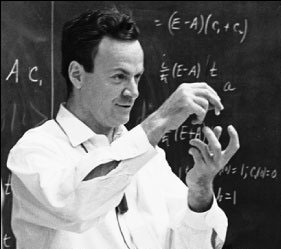- Richard P. Feynman
Richard Phillips Feynman was an American theoretical physicist known for his work in the path integral formulation of quantum mechanics, the theory of quantum electrodynamics, and the physics of the superfluidity of supercooled liquid helium, as well as in particle physics (he proposed the parton model).
In theoretical physics, Feynman diagrams are pictorial representations of the mathematical expressions governing the behavior of subatomic particles. The scheme is named for its inventor, Nobel Prize-winning American physicist Richard Feynman, and was first introduced in 1948. The interaction of sub-atomic particles can be complex and difficult to understand intuitively, and the Feynman diagrams allow for a simple visualization of what would otherwise be a rather arcane and abstract formula. As David Kaiser writes, "since the middle of the 20th century, theoretical physicists have increasingly turned to this tool to help them undertake critical calculations," and as such "Feynman diagrams have revolutionized nearly every aspect of theoretical physics". While the diagrams are applied primarily to quantum field theory, they can also be used in other fields, such as solid-state theory.


No comments:
Post a Comment